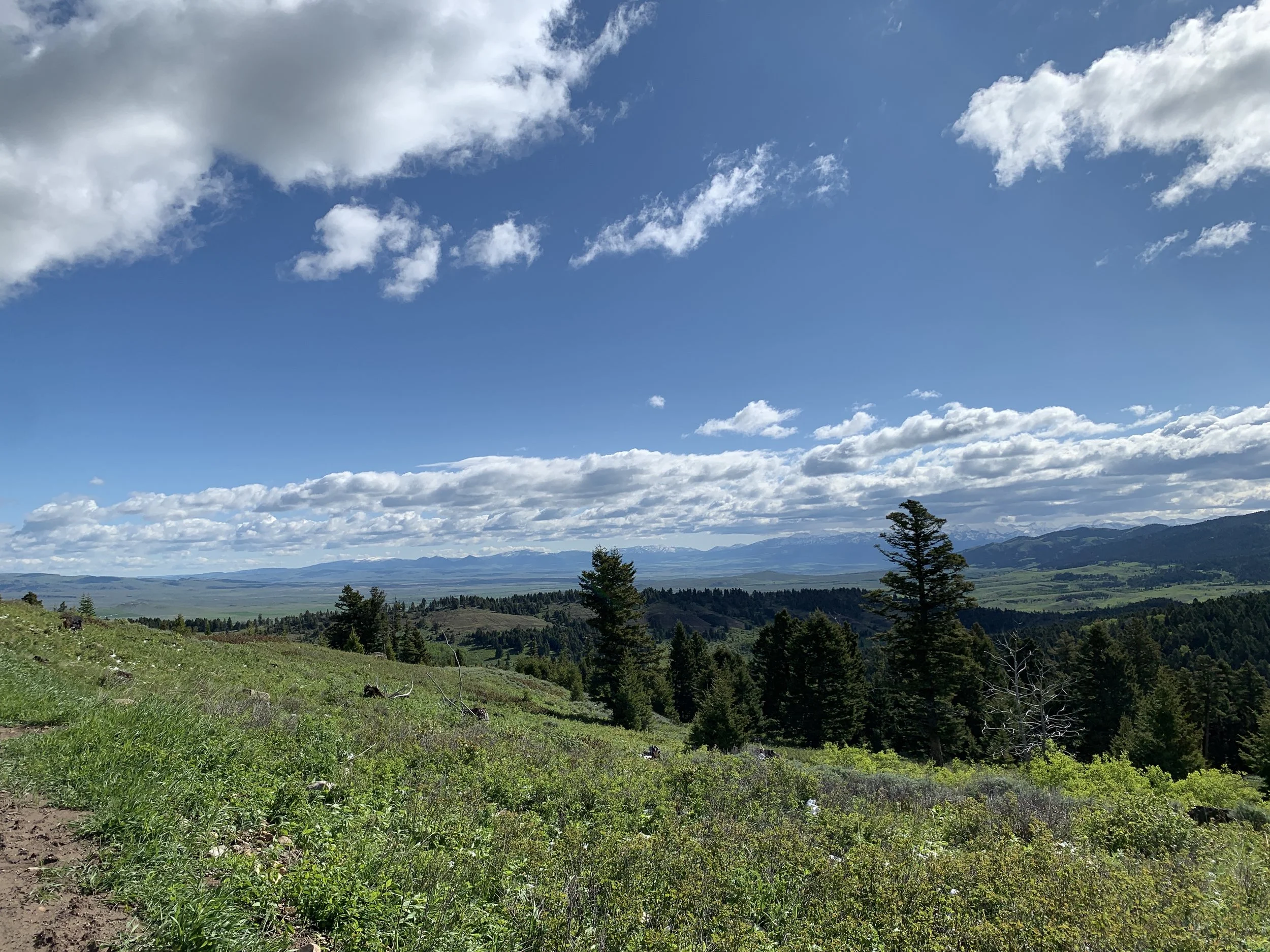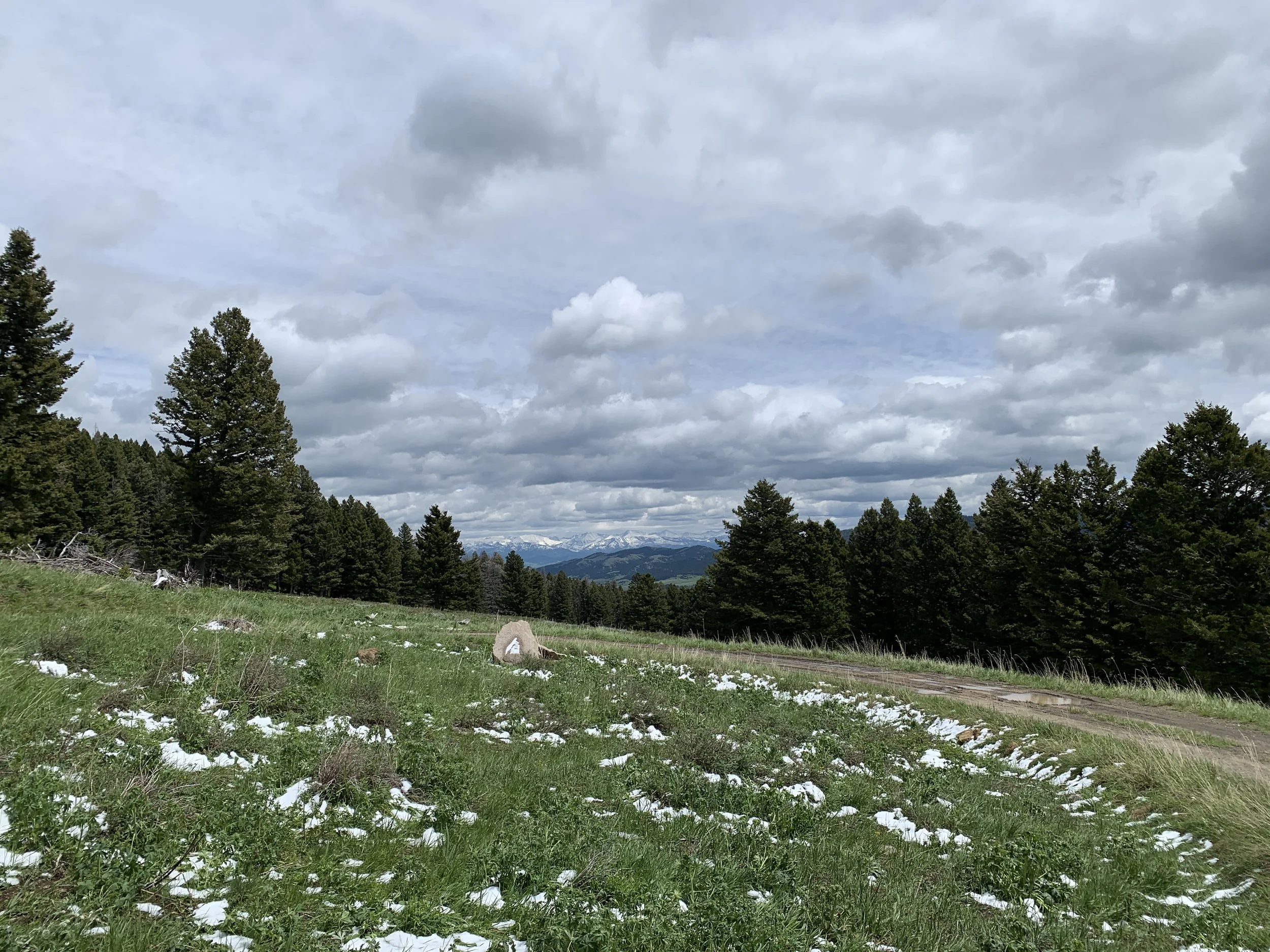Fairy Lake
We were both in agreement we had been working too much and needed a break. A day hike was the solution, thereby setting us to look at and read various reviews for trails around Bozeman. Fairy Lake looked promising since it was located on the east side of the Bridgers and only a 45-minute drive. If successful, the goal would be to reach the lake which sits at the base of Sacajawea Peak. The highest in the Bridger range. Trails lead you further to the top of the peak. We would determine whether to go further after reaching the lake.
Two days later we embarked, and it was beautiful in the valley, sunny and 65. Cooler air would greet us as we made our way up Bridger Canyon.
Driving along the Bridger range, most of the winter snow was gone. Fire scars from last year, which rounded the southern end of the range were visible. At the time, efforts by federal and state agencies, along with cooler and more humid air paid off in keeping the fire from running through the canyon. Some homes and outbuildings were lost. Others were saved by evident bulldozed lines in the soil. One home was a green oasis amongst the burnt forest and fields around it.
Going north we soon escaped the last of the fire lines and the canyon returned to normal. Gaining eleveation the canyon around us receded. Entrance to the Fairy Lake trailhead is near the bottom of a hill intersecting Brackett Creek Road as it arrives from the east. Turning off you are on gravel, which changes over to dirt and rock as the drive continues along Fairy Lake Creek. At this time of year vehicles on the access road are nil. We make our way to the trailhead parking lot and 5-6 trucks are there. We get out, stretch stiffened muscles and get ready to depart.
First trips into new areas can be deceiving. We quickly deceive ourselves thinking we are at the campground, which would be less than a mile hike to the lake. Daypacks containing water and snacks are ready, and we embark on the trail. Sun is beaming through the forest canopy and the cool alpine air surrounds us. Traces of winter snow begin to appear as we climb up elevation. Snow comes closer to the trail and then covers it. A mile into the hike we stop, wondering why we don’t see the lake or the clearing of trees on the horizon that would indicate Fairy Lake is ahead of us. A faint cell signal is found and the pinpoint on our phone maps show that we have another 3 1/2 miles to go. Quickly, the realization comes we parked in the lower lot. Our leisurely hike has now become a trek. Since we have the day to ourselves, and we're enjoying the relief of not having to attend meetings, we continue.
We continue to climb in elevation and cooler air means more snow on the trail. Depths now reach 1 to 2 feet and in some places snow drifts are encountered over three feet. Not all snow is the same. Cold winter hard packed snow is the easiest to hike on and fresh powder snow is okay. Spring snow, partially melted with a thin crust on top can be the worst. As spring daytime temperatures climb the sun melts the top snow, concentrating water content which freezes to ice as temperatures drop at night. Hiking during the day on spring snow you don’t know when you will break through the top crust. Sometimes every step, sometimes every other step. When you break through the granular snow underneath covers pant legs and seeps through boot tops. Break throughs also mean more exertion due to the requirement to lift legs and boot up out of the snow. Progress is slow, and when combined with increasing elevation stops become frequent. Moments passed when we considered turning back, waiting for spring to clear the road to the upper campground parking lot. However, we continued, with no relief from snow depth or break throughs.
Nearing exhaustion the terrain levels off, giving respite to our lungs and allowing us to slowly increase our pace. Then, we spot a void of trees on the horizon. This can either be a high mountain meadow or water. Soon the tip of Sacagawea Peak can be seen above the tree line. Our first indicator of arriving at the lake is a picnic table sticking out the snow. We clear a bench and rest. Through the trees we see the glimmer of water. Water and snacks are welcome as we restore ourselves. We set out in the direction of the water and soon the lake shoreline with Sacagawea rising to the west comes into full view. We eventually proclaim the trek was worth it as we evidence white snow now touching clear blue water and the mountain peaks. We were also relieved to see two other hikers, since more than four hours have passed without seeing another human. We visit and learn they hiked up the campground road, which is closed due to the remaining winter snow. Agreement is reached to walk together and enjoy the lake. We are the only four there and have the surroundings to ourselves. We are also fortunate they know the way to the campground road, which is significantly easier than the up-mountain trail we took to arrive at the lake.
Hiking back, the air is full of sunshine. Being on a road, the grade is gradual. Behind us a father and son are returning on skis. They admit this will be the last trip of the winter yet are satisfied with being able to snow trek this late in the season. Continuing ahead of us, they stop and claim bikes they stowed in the brush to ride back down the mountain. When we returned to the trail head parking lot they were gone.
We bid goodbye, exchange phone numbers, which leads us in a couple of weeks to having dinner together. We recount the experiences of hiking Fairy Lake and discuss other possibilities such as the Crazy Mountains. Two weeks of giving the body rest now makes other hikes more palatable to consider. Perhaps when the daily grind of work brings us to the tipping point of needing to get out in the woods, we will set off on another adventure.




